School Architecture of the Future
Mission
UIS is a community of active, inquiring learners comprising students, parents, and school staff where knowledge, skills, and compassion are developed and celebrated. Our students will develop into responsible citizens of Egypt and the world.
Vision
UIS uses the most effective means of teaching, learning, and assessment to support our students through a challenging and complete international curriculum in order to achieve its mission and values while building and maintaining a caring community where all members have support and a sense of belonging.
Concept Creation
School Architecture of the Future.
Working side by side with the school owners and education leaders, this school project is comprised of many stakeholders with one goal in mind; to shape future minds in an educational haven. Uptown International School developed an Education Design Brief that responds to the specific needs of primary and secondary school students and their teachers, from this HSI was able to create, engineer and design a school layout that fits the educational needs of the students.
Working side by side with the school owners and education leaders, this school project is comprised of many stakeholders with one goal in mind; to shape future minds in an educational haven. Uptown International School developed an Education Design Brief that responds to the specific needs of primary and secondary school students and their teachers, from this HSI was able to create, engineer and design a school layout that fits the educational needs of the students.
Creativity is of high importance in this space; therefore the building features different learning environments for artistic and technical pursuits. The plan is to have formal learning labs that can be transformed, with the aid of generous openings, vertical connectivity and staggered interfaces between spaces, to create an interconnected learning landscape.
An interesting feature of this building is the implementation of natural cooling through a subterranean thermal maze, which will ensure the building’s sustainable operation.
The school building has plenty of shade, but also lots of open spaces to allow for ventilation. The building has drawn inspiration from the traditional red brick roofing tiles from a hybrid neo-classicism and colonial architecture.
An interesting feature of this building is the implementation of natural cooling through a subterranean thermal maze, which will ensure the building’s sustainable operation.
The school building has plenty of shade, but also lots of open spaces to allow for ventilation. The building has drawn inspiration from the traditional red brick roofing tiles from a hybrid neo-classicism and colonial architecture.
The school’s architecture and interior design surveys educational facilities from around the globe.
Redefining how
students learn.
Exterior Facade

Exterior Back Facade
Essentially the building has two faces: a city side with lower building volumes and the back façade with the building shape enclosing onto the outdoor area, hugging the school yard protecting the children, with a ‘softer’ park side.
The school has planned to create a center with the library, auditorium and cafeteria at the core of it allowing for these zones to be central and communal.The kindergarten and primary is oriented towards the left wing and ground floor area that offers more cover, while the departments for the older children are more dispersed to the second floor of the project. The building is considered a “massive school” because of its thick insulation, soundproofing, directional signage and way finding, and a ventilation system with heat recuperation.
Modern practices in education require a variety of teaching and learning spaces.
The school’s architecture and interior design surveys educational facilities from around the globe.
Ground floor

Entrance Lobby
Outstanding resources support successful development of knowledge and skills and these include world-class staff in world-class facilities.
Learning environments should be happy, engaging, caring, and safe places where everyone feels secure and valued.
Modern practices in education require a variety of teaching and learning spaces which we provide.

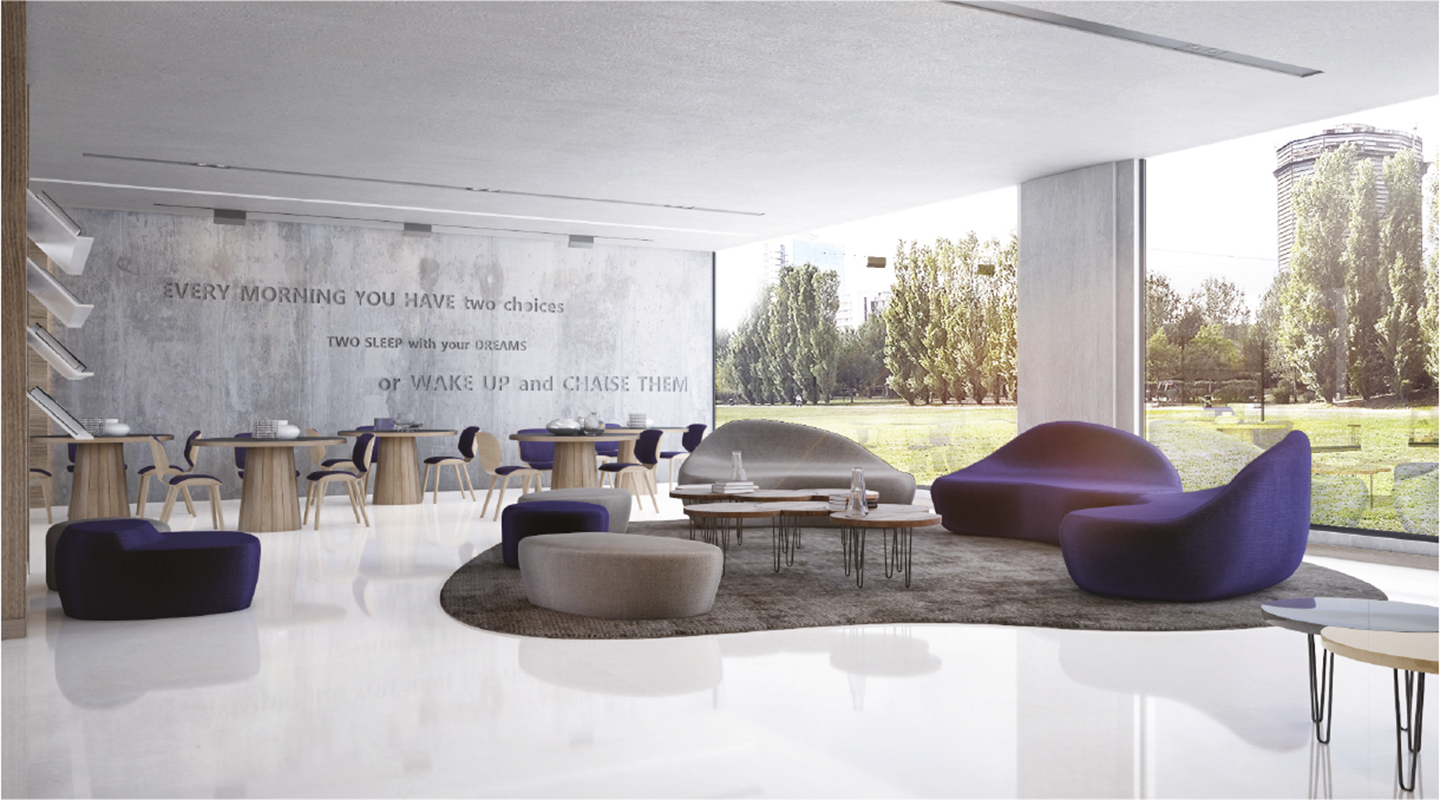
Administrative Area/Offices
 Administrative
Corridor
Administrative
Corridor
Interior Architectural design plays an important role in many aspects of student learning. From the chairs students sit on to the colors on the walls, design choices have the ability to support an active learning environment. These design elements subtly reinforce a district’s commitment toward student success.
What story do you want to tell? Do you want your students to feel engaged and welcome as well as your teachers to feel supported? By implementing creative concepts of interior design, you are fostering these emotions.
Architects do more than just design and construct new buildings.
Many firms also renovate buildings, creating interior design concepts that foster student learning. They do this by: Adding flexible and ergonomic furniture;
Using graphics and color to reinforce community and engage students;
Improving lighting and acoustics to support various educational functions;
Incorporating modern technology in the classroom, AND
By incorporating these interior design elements, you’ll significantly improve not only the look of the school but also how students and teachers feel when they walk onto the campus.
Interior Architectural design plays an important role in many aspects of student learning.

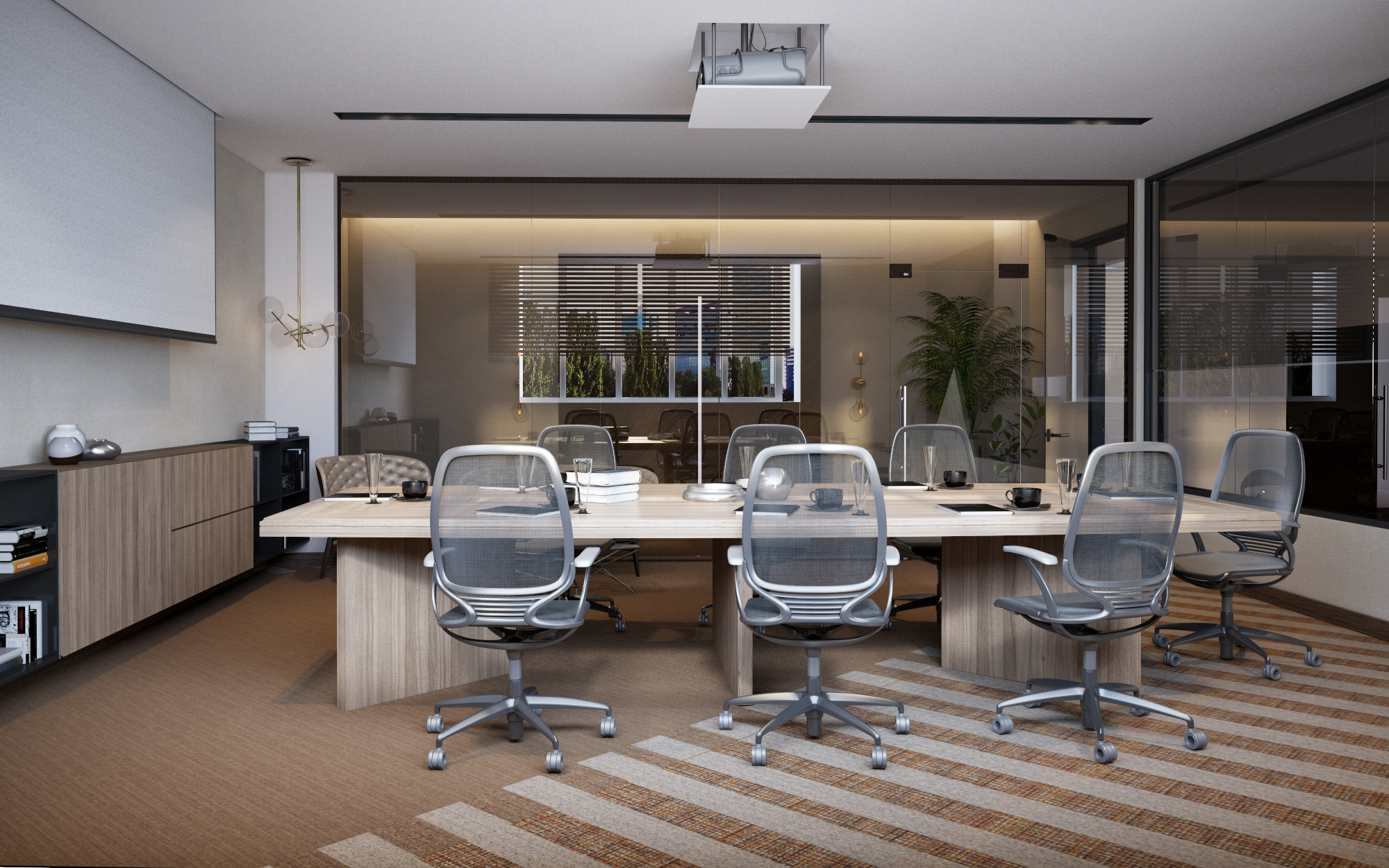
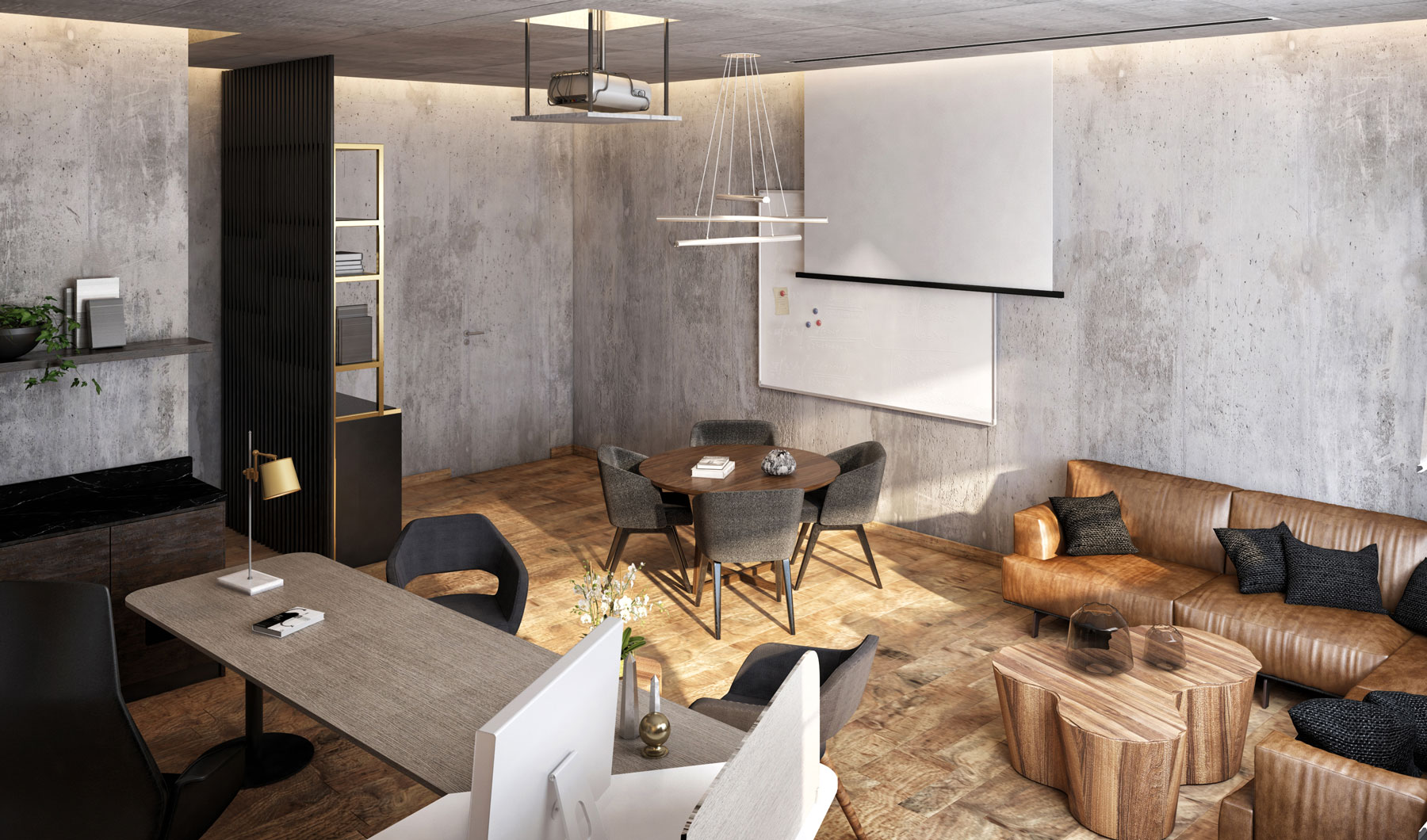
A big trend in office design that is sweeping the world is the concept of a workplace that resembles a home away from home. From bright and comfortable sofas to recreational swings to ping-pong tables to lounge areas, the idea is to make the workplace as relaxing and stress-free as possible. The idea is also to provide areas where employees can take short breaks to give their bodies and minds a rest so that they can recharge and remain productive throughout the day.
But cozy sofas and lounges aren’t all about having down-time. They can be used productively as well. For example, an employee can work on his or her laptop while seated on a cozy sofa or café table. Group meetings can be held at an informal living-room type of space with sofas, armchairs, and coffee tables. Two employees can discuss the latest work-related problem while standing on a that can be found in a typical residential home. And a person working from home may very well do those kinds of activities on those areas of the home.
Kindergarten Area
 Kindergarten
Corridor
Kindergarten
Corridor
UIS knows that every learner is a unique, innately curious and important individual whose thoughts, ideas, and expression should be encouraged.
Early Years classrooms feature colorful materials and surfaces to stimulate the mind, helping facilitate the teaching and learning process. Classroom design elements have been carefully selected and constructed. These include non-traditional desks, flexible seating that ranges from chairs to cushions to balls, learning centers, displays, and storage.
Early Years classrooms feature colorful materials and surfaces to stimulate the mind, helping facilitate the teaching and learning process. Classroom design elements have been carefully selected and constructed. These include non-traditional desks, flexible seating that ranges from chairs to cushions to balls, learning centers, displays, and storage.
These modern classroom design elements allow us to engage in inquiry-based learning, focus on student needs, work in groups, and make student-centered learning spaces. At the core of the school are the two libraries, for both Primary and Secondary student needs, as well as a large theater where students are able to demonstrate their success through performance and other events.
Modern classrooms allow and encourage student movement. They feature learning stations that focus on an aspect of the unit being studied.
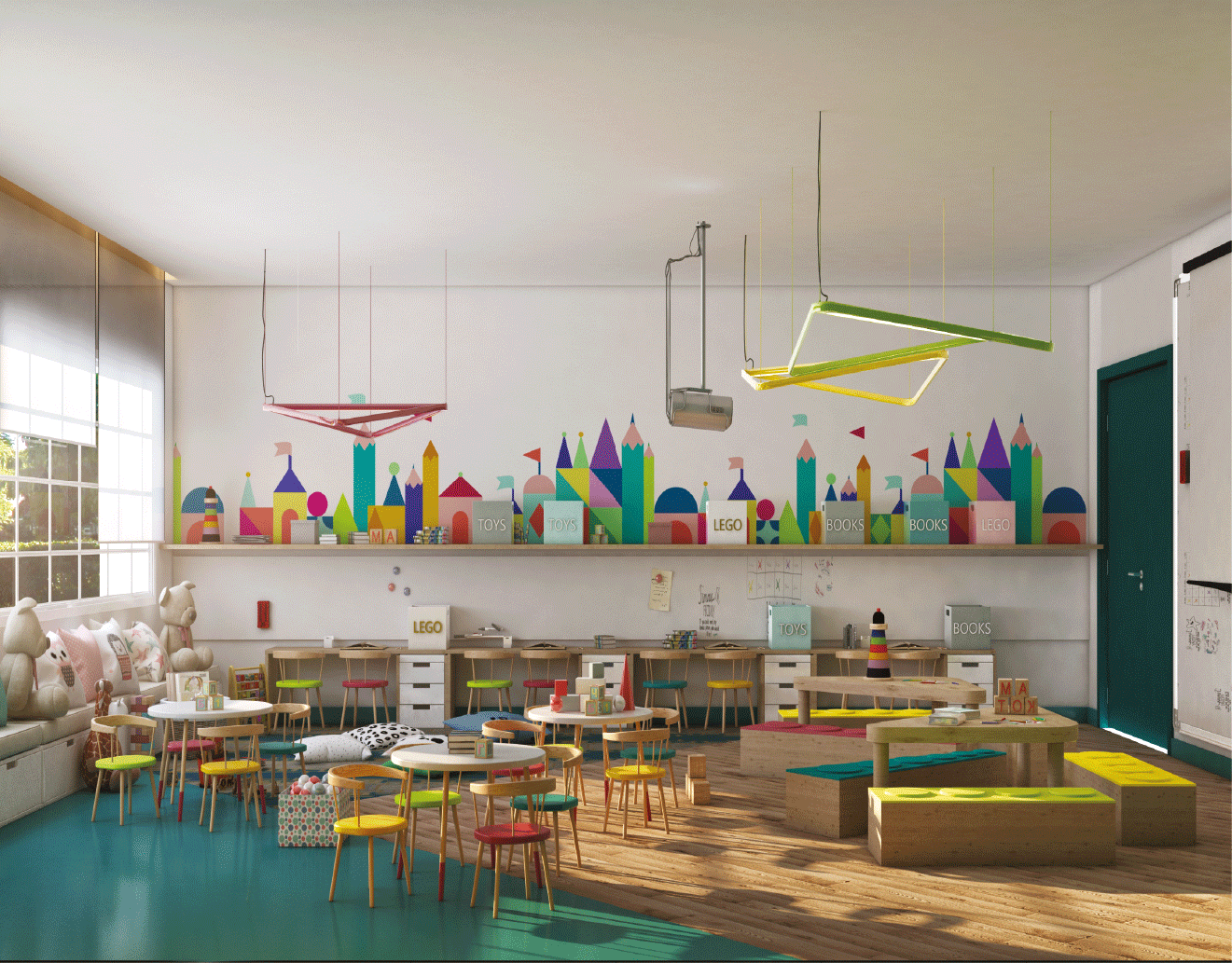
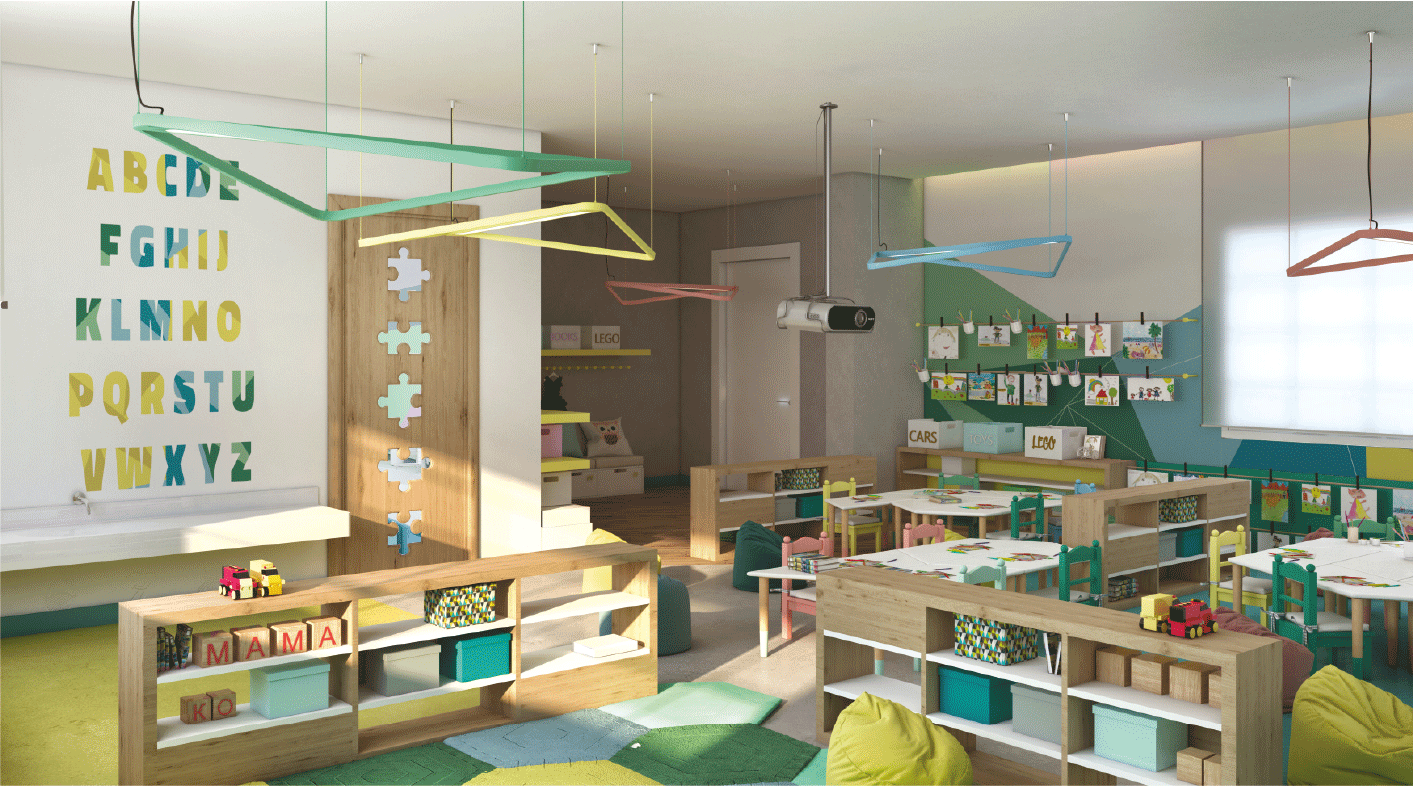
UIS’s food policy promotes healthy eating in line with our mission, vision, and values.
High quality food with student nutrition and energy requirements in mind will be featured in our Canteen.
Cafeteria
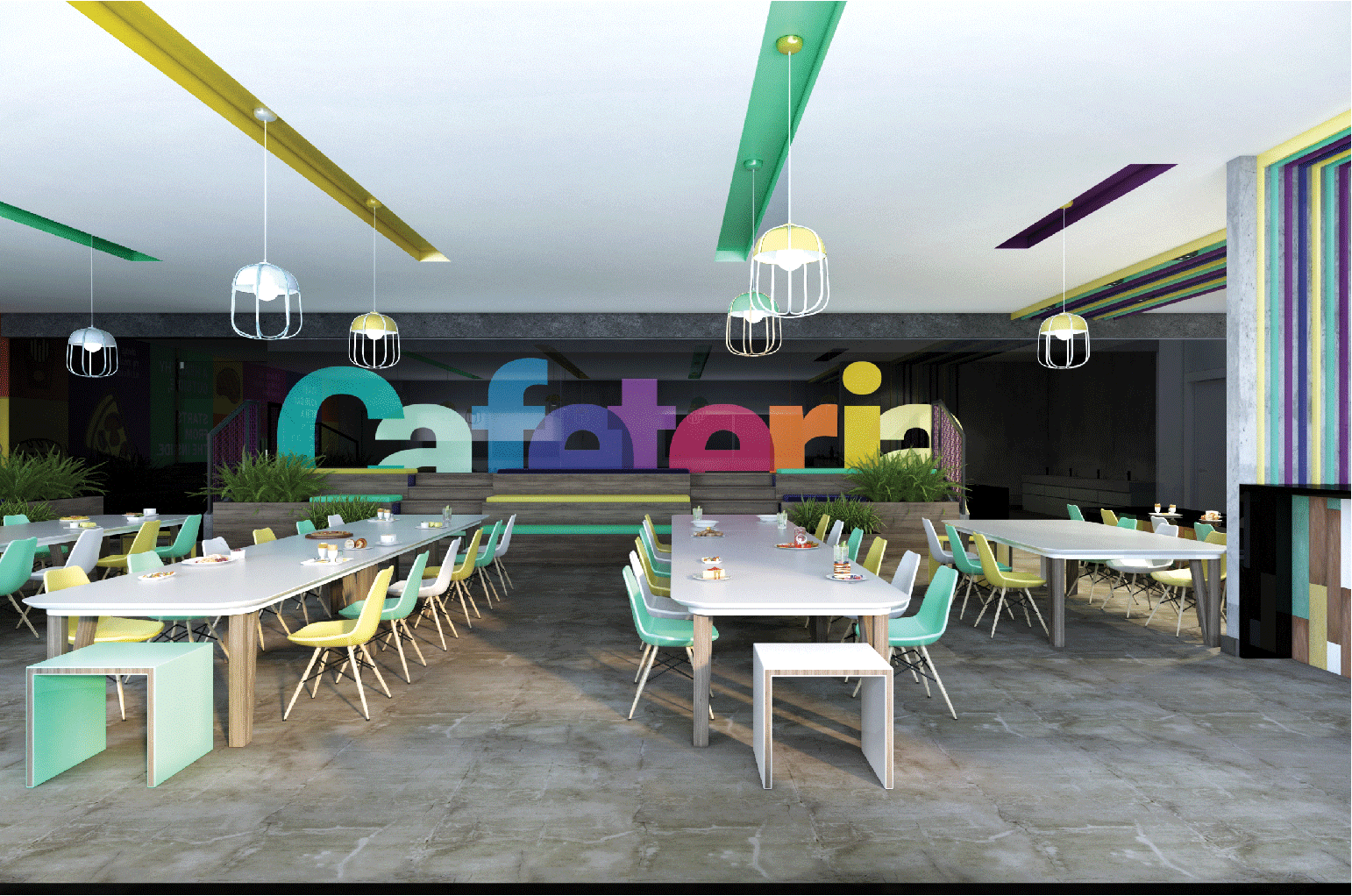

Learning environments should be happy, engaging, caring, and safe.
The school’s architecture and interior design surveys educational facilities from around the globe.

Primary Classrooms
Uptown International School’s curriculum uses inquiry-based learning from Early Years 1 (3 year olds) through Grade 12. The school intends to apply for International Baccalaureate (IB) Primary Years Programme (PYP) Candidacy at the earliest opportunity as this is the most internationally recognised and successful inquiry-based learning programme.
Inquiry-based learning is a mode of teaching and learning which is student-centred and encourages students to: Build new knowledge and schools based on what they already know and can do; be curious and to ask questions; discover how to answer many of their own questions through asking good questions, reading, experimenting; be aware that they are learning and that subjects are interconnected; reflect on their learning so that they can see their own progress and be proud of that; and act on what they have learned.
Inquiry-based learning is a mode of teaching and learning which is student-centred and encourages students to: Build new knowledge and schools based on what they already know and can do; be curious and to ask questions; discover how to answer many of their own questions through asking good questions, reading, experimenting; be aware that they are learning and that subjects are interconnected; reflect on their learning so that they can see their own progress and be proud of that; and act on what they have learned.
It is different than the traditional teacher-centred classroom where students primarily sit in rows, listen to the teacher, read a book, memorise information, and then repeat this information on an example. The traditional classroom discourages questions and exploration in favour of repeating information for the reward of a grade. Inquiry-based education is very different.
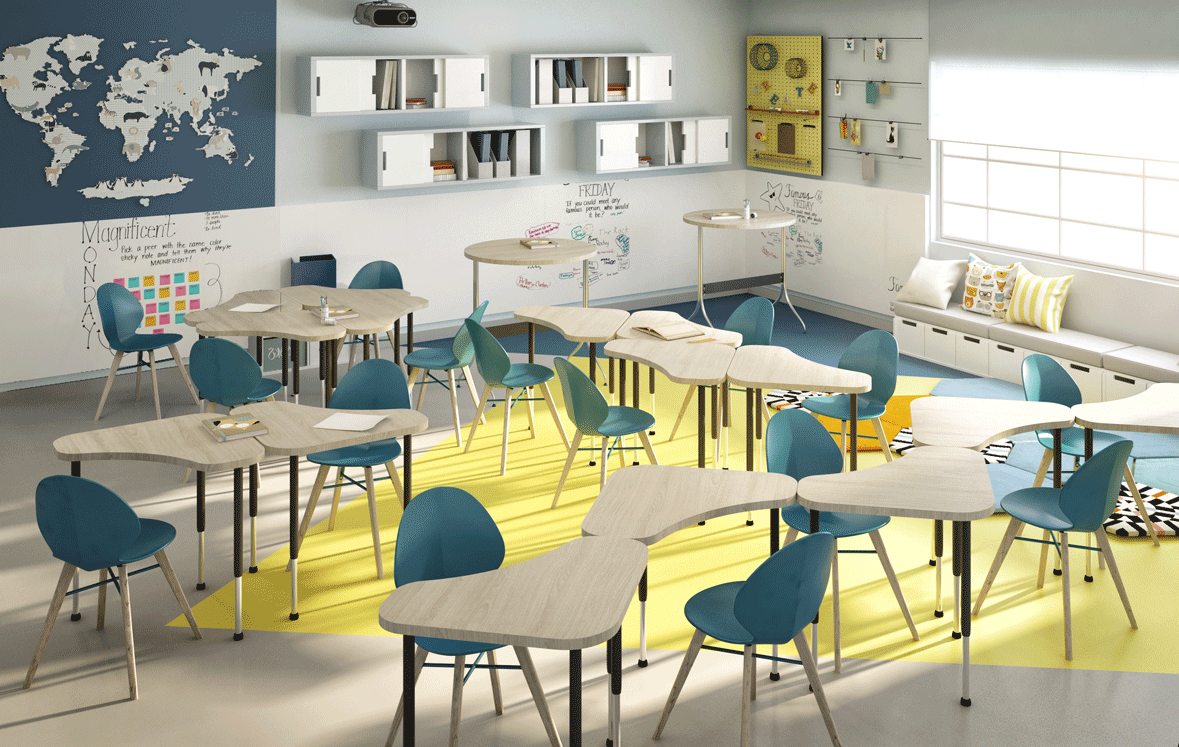
Research indicates that students learn best when they are able to make connections between prior and new knowledge and skills.
Secondary Classrooms
All children are innately curious. They ask questions, explore their surroundings, use their senses of hearing, taste, touch, seeing, and smelling to learn, and conduct experiments. Inquiry-based education builds and encourages this to continue so that students can draw conclusions and develop new questions and experiments based on this new knowledge and understanding, developing new skills in the process.
Students learn best when they experience the interconnections between subjects so that they understand that language allows communication across all subject areas, that math is a form of communication, and that our world is the result of language, mathematics, sciences, and social sciences. Music, visual and performing arts, and physical education are connected to all other subjects as they involve and are forms of communication, science, mathematics, and social sciences.
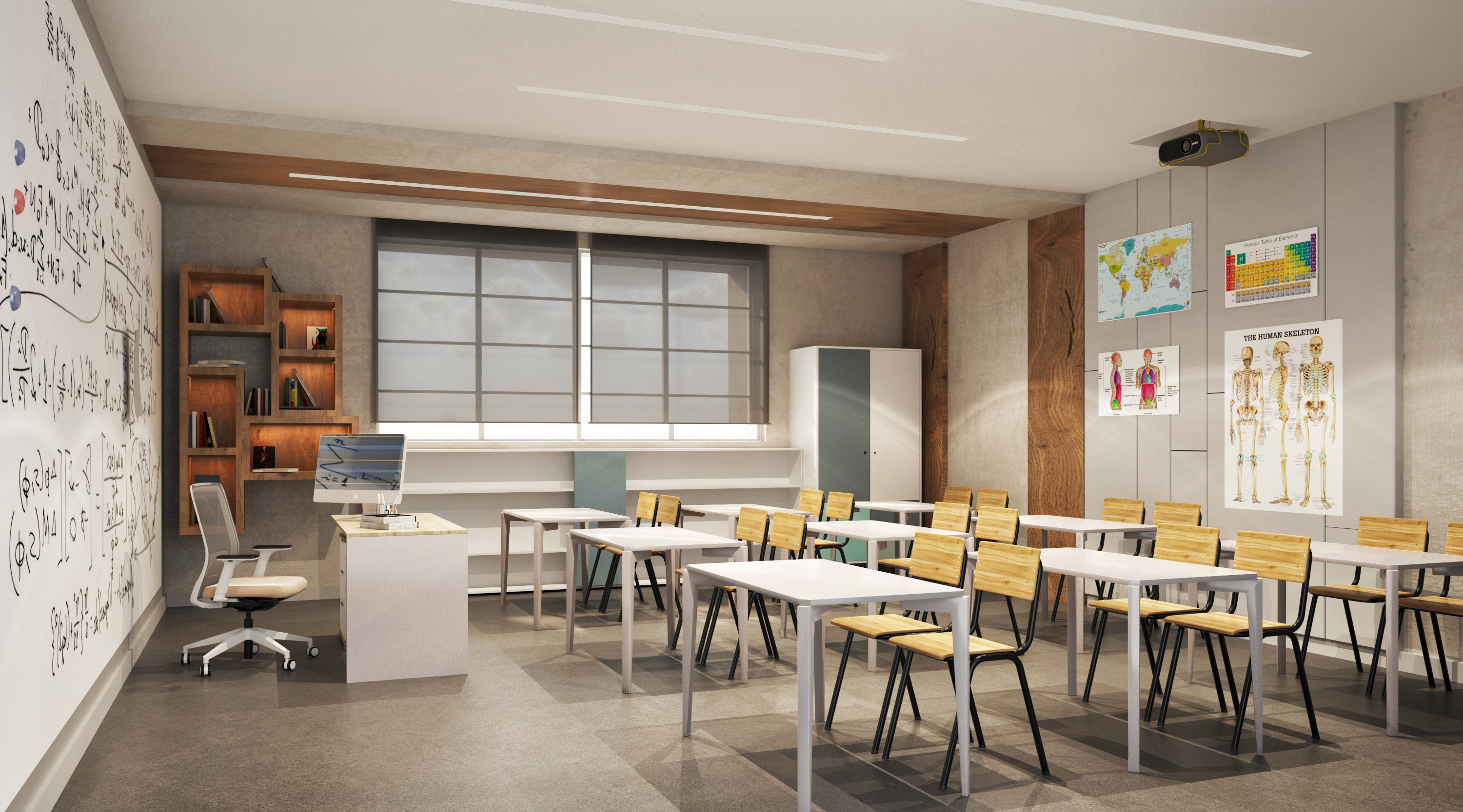
Interior design plays an important role in many aspects of student learning.
The school’s architecture and interior design surveys educational facilities from around the globe.


Board Meeting Room
Today’s cutting-edge companies are now using an office design plan called Activity-Based Working.
What this means is that an employee can work anywhere in the office that suits his or her current activity.
For example, if an employee needs to do something that requires a high level of concentration and focus, he or she can move to an isolated quiet area to reduce distractions from co-workers.
On the other hand, if an employee is doing something that requires close collaboration with co-workers, such as learning a new software application or overseeing a new employee, then he or she can sit at a traditional desk located immediately next to other co-workers in an “open communication” type of seating arrangement. Meeting Areas – These are areas where groups of people can meet to discuss anything they need to discuss. The meeting area can be either an enclosed room or a lounge area.
On the other hand, if an employee is doing something that requires close collaboration with co-workers, such as learning a new software application or overseeing a new employee, then he or she can sit at a traditional desk located immediately next to other co-workers in an “open communication” type of seating arrangement. Meeting Areas – These are areas where groups of people can meet to discuss anything they need to discuss. The meeting area can be either an enclosed room or a lounge area.
Meeting areas come in different sizes to accommodate different numbers of people. In some organizations, meeting areas are a limited resource, so people need to schedule and reserve time slots in advance for each meeting room. Impromptu meetings between two people can be held in lounge areas or small tables.

Modern classrooms allow and encourage student movement.
The curriculum requires students to perform as a way of communicating their learning. This takes the form of demonstrations, drama, speeches, dance, presentations, and film.
Drama Room
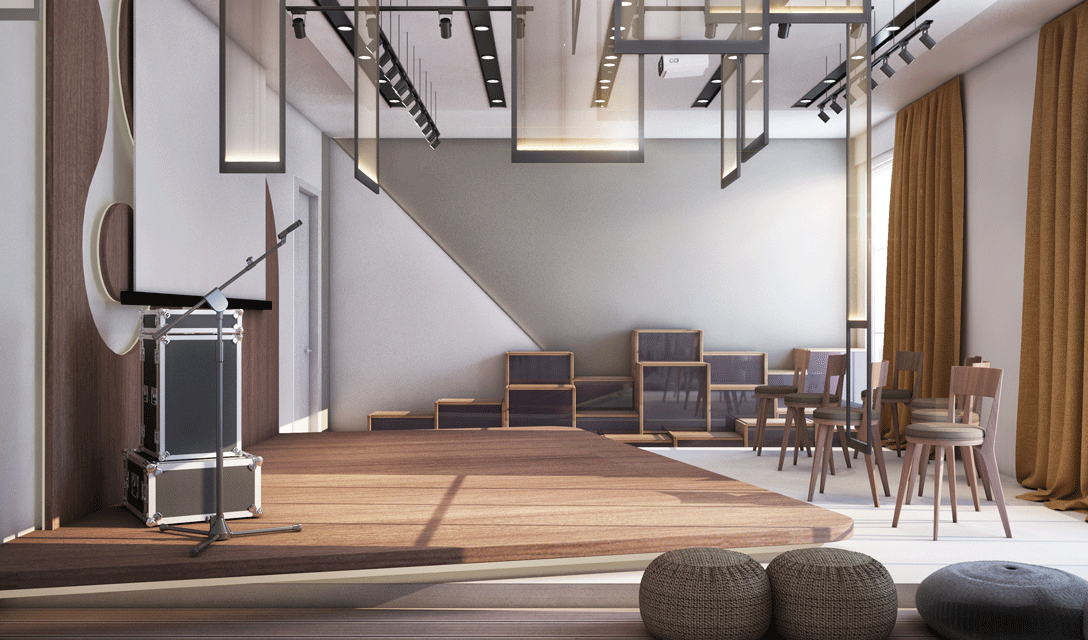
Classroom design elements are carefully selected and constructed.
The school’s architecture and interior design surveys educational facilities from around the globe.

Fourth Floor plan
Science Laboratory
State-of-the-art facilities include science labs that motivate students and provide opportunities for practical work.
Students gain knowledge and skills through lab work. They learn to formulate good questions and determine the best means of obtaining data to resolve the questions.
Students learn how to perform and conduct appropriate and safe experiments, and analyze the data collected. Hands-on learning is essential in education.Our science lab facilities were designed to allow all students to have equal access to any lab demonstration performed by the teacher.
Additionally, this non-traditional arrangement allows all students equal access to science and health and safety equipment.
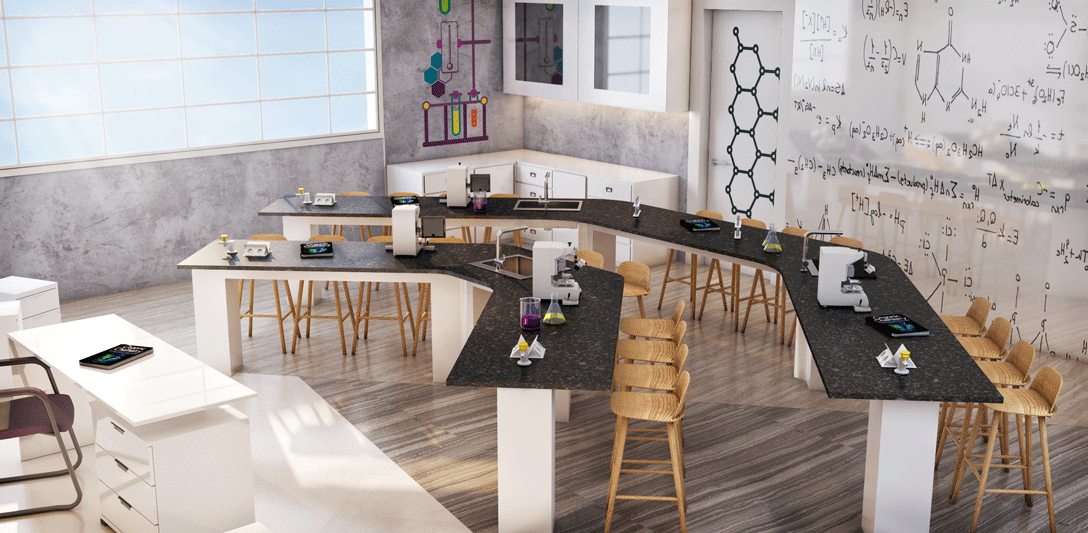

DROP US A LINE
info@hsi-eg.com
+20 2256 141 27 / +20 2256 141 28
+20 128 7831 831
+20 128 7831 831
